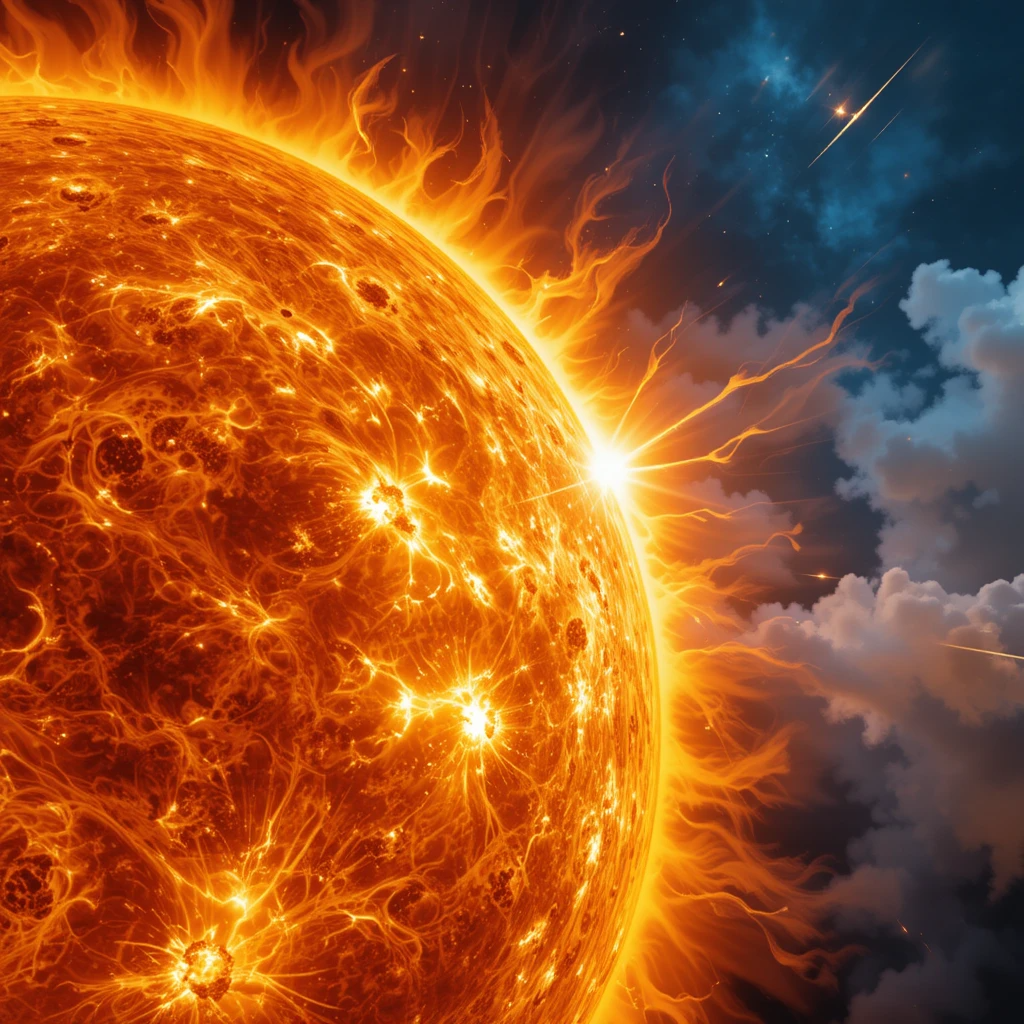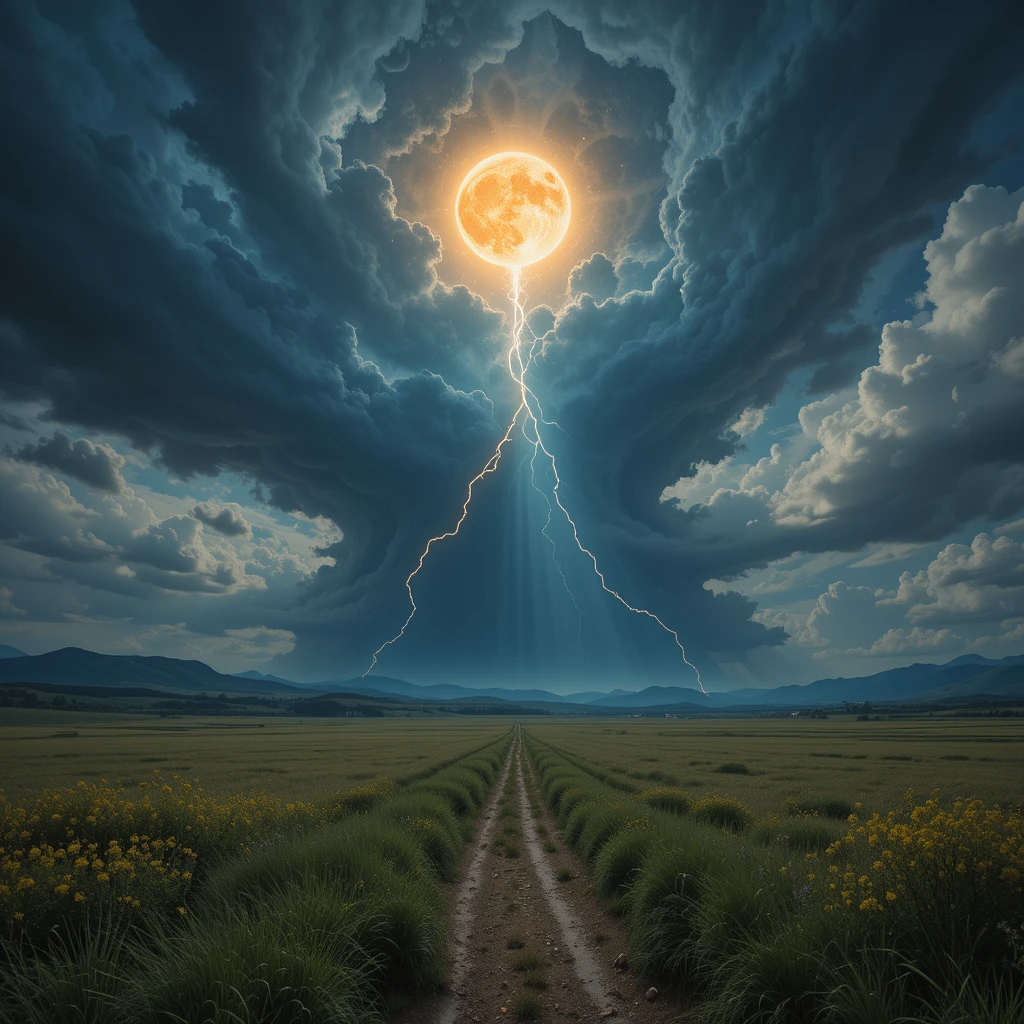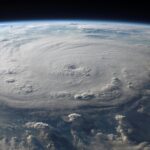In a chilling revelation, NASA has confirmed a massive solar storm is headed toward Earth, with potential to disrupt satellites, GPS systems, radio communications, and even power grids. As the Sun enters a peak solar activity phase in 2025, scientists have warned that this could be one of the most significant space weather events in recent history. What does this mean for us here on Earth? Let’s dive deep into the facts, risks, and everything you need to know.
What Is a Solar Storm?

A solar storm is a disturbance on the Sun, caused by solar flares and coronal mass ejections (CMEs). These are massive bursts of energy and magnetic fields released into space, and when directed at Earth, they interact with our planet’s magnetic field. The result? Beautiful auroras—and sometimes, dangerous consequences.
Types of Solar Activity:
-
Solar flares: Sudden bursts of radiation.
-
Coronal Mass Ejections (CMEs): Huge clouds of solar plasma and magnetic fields.
-
Solar wind streams: Charged particles that constantly flow from the Sun.
NASA’s Latest Warning – July 2025 Solar Flare

NASA’s Solar Dynamics Observatory recently detected an X-class solar flare—the most powerful classification—erupting from sunspot AR3378, aimed directly at Earth.
NASA’s Space Weather Prediction Center issued a G3 (Strong) geomagnetic storm watch for the coming days.
This could mark the largest solar storm of the decade, raising alerts worldwide about possible disruptions in:
-
Satellite communication
-
GPS accuracy
-
Aviation navigation
-
Internet infrastructure
-
Electric power grids
What Happens When a Solar Storm Hits Earth?
When a CME reaches Earth’s atmosphere, it collides with the magnetosphere, producing a geomagnetic storm. While this triggers stunning auroras near the poles, it can also have dangerous side effects:
Effects of Solar Storms:
| Impact Area | Potential Disruption |
|---|---|
| Satellites & GPS | Loss of signal, data errors |
| Aviation | Navigation interference |
| Communication Systems | HF radio blackouts |
| Power Grids | Voltage surges, blackouts |
| Internet Infrastructure | Submarine cable disruption |
| Space Missions | Astronaut radiation exposure |
Could This Solar Storm Take Down the Internet?

Yes, under worst-case scenarios, solar storms have the potential to disrupt undersea internet cables and internet infrastructure—especially those relying on satellites and long-distance magnetic data transfer.
In fact, a 2021 study from the University of California warned that a Carrington-like event today could knock out global internet access for days or even weeks.
Historical Comparison:
-
Carrington Event (1859): Telegraphs exploded, fires started.
-
1989 Quebec Blackout: Millions left without power.
-
2025 Solar Flare? Scientists say: “We are not fully prepared.”
Why 2025 Is Critical – Solar Cycle 25
The Sun follows an 11-year activity cycle. We are currently in Solar Cycle 25, predicted to peak between 2024 and 2026. During this time, the frequency and strength of solar flares increase dramatically.
“The Sun is acting aggressively earlier than expected,” says Dr. Sarah McIntyre, space weather scientist at NASA.
This explains why July 2025 is seeing a surge in space weather alerts and why authorities worldwide are on high alert.
Global Preparedness – What Are Governments Doing?
Various nations, including the US, UK, and EU, have activated space weather monitoring protocols:
-
NASA and NOAA are coordinating real-time alerts.
-
Airlines are rerouting polar flights to avoid radiation exposure.
-
Power grids are preparing to switch to protection mode.
-
Internet providers are on standby for outages.
India’s ISRO and Europe’s ESA have also issued public advisories on potential satellite GPS signal drops.
How Will It Affect You?
Most people won’t see visible changes—unless you’re near the poles, where auroras may become visible even from lower latitudes like New York, Paris, or Tokyo. But some key effects could impact your daily life:
Possible Effects:
-
Your Google Maps or Uber might show incorrect locations.
-
Mobile signals may become weak or erratic.
-
Radio stations (especially AM or HF) could go silent.
-
You might witness unexpected blackouts.
If you’re a drone operator, pilot, sailor, or ham radio operator, you’ll need to be extra cautious during this period.
What Should You Do to Stay Safe?
Here are a few practical steps to stay safe and minimize inconvenience:
Safety Checklist:
-
Keep devices charged in case of blackouts.
-
Have a paper map for backup navigation.
-
Avoid relying solely on GPS for critical activities.
-
Unplug sensitive electronics during peak hours.
-
Use surge protectors on essential appliances.
-
If you’re a pilot or in maritime navigation, follow agency advisories.
Also, follow official alerts from NASA, NOAA, and your local government.
Where Can You See the Auroras?
The good news? This solar storm might produce some of the most spectacular auroras in recent memory.
“The auroral oval is expanding—people far from the Arctic may see the Northern Lights,” says NOAA forecaster Mark Douglas.
Best Regions for Aurora Viewing:
-
Northern US (Michigan, Minnesota, Alaska)
-
Canada
-
Scotland and Northern UK
-
Norway, Finland, Sweden
-
Northern Russia
-
Parts of Germany, Poland, and Japan
Use aurora-tracking apps like My Aurora Forecast or AuroraWatch UK to get real-time alerts.
Expert Opinions – Is This a Threat?
While not all solar storms cause damage, experts warn that complacency is dangerous. Even a moderately strong storm, like the one expected, can expose vulnerabilities in modern technology.
NASA Statement:
“This is a textbook case of a geomagnetic disturbance. We are monitoring it closely,” said Dr. Tanya Hill, NASA solar physicist.
Cybersecurity Analysts Say:
-
“Backup communication systems must be activated.”
-
“Cloud providers should brace for data sync issues.”
This isn’t about panic—but preparedness.
Global Reactions and Public Concern
As news spreads, people are sharing both concern and curiosity:
-
Twitter trends include:
#SolarStorm2025,#AuroraWatch,#NASAAlert -
Reddit forums are flooded with skywatchers and doomsday preppers
-
YouTube videos about “Carrington 2.0” are going viral
Governments are urging the public to remain calm but alert.
Long-Term Implications of Solar Storms
Beyond the immediate impact, scientists worry about solar superstorms becoming more frequent due to shifts in solar behavior.
Possibilities Include:
-
Need for solar weather insurance for satellites
-
Building resilient digital infrastructure
-
Creating shielded space stations
-
Backup underground communication networks
In essence, our future in space and tech depends on how we adapt to solar risks.
Final Thoughts – Is the Earth Ready?
As NASA confirms this solar storm, we’re reminded how vulnerable Earth is to cosmic forces. Yet, we’ve also come far in understanding and predicting such phenomena.
Instead of fear, let this be a moment of scientific wonder, sky-gazing joy, and technological preparation. Whether you’re a casual stargazer, a tech enthusiast, or a business owner, now is the time to learn, adapt, and stay alert.
Stay Updated
Follow official channels for live updates:
-
NASA Solar Weather
-
[Aurora Forecast Apps – Android/iOS]





